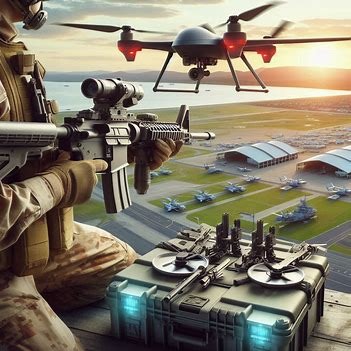
Revolutionizing Entertainment: Drones in Media and the Regulatory Landscape
In recent years, the entertainment and media industries have undergone a seismic shift, thanks to the advent of drone technology. These unmanned aerial vehicles have not only transformed the way we capture breathtaking visuals but have also sparked a dialogue about regulations and ethics in this rapidly evolving field.
Major Impact
The Cinematic Revolution
Drones have ushered in a new era of cinematography, offering filmmakers unprecedented creative freedom. Gone are the days when aerial shots necessitated exorbitant helicopter rentals or cumbersome crane setups. Now, a skilled drone operator can capture sweeping vistas, intricate tracking shots, and vertiginous perspectives with relative ease and at a fraction of the cost.

Consider the 2018 film “Mission: Impossible – Fallout.” The movie’s iconic HALO jump sequence, featuring Tom Cruise plummeting through a lightning storm, was partially captured using drones. This groundbreaking scene exemplifies how drone technology can push the boundaries of visual storytelling, delivering heart-stopping action that was once impossible or prohibitively expensive to film.
In the realm of television, nature documentaries have been revolutionized by drone cinematography. The BBC’s “Planet Earth II” utilized drones to capture never-before-seen footage of wildlife in their natural habitats. One particularly memorable sequence showed Nubian ibexes descending treacherous cliffs, with drones providing intimate, dynamic shots that traditional filming methods could never achieve.
Regulatory Challenges and Ethical Considerations
As drones become increasingly ubiquitous in media production, they’ve sparked a complex web of regulatory and ethical challenges. Aviation authorities worldwide have scrambled to implement regulations that balance safety concerns with the creative potential of drone technology.
In the United States, the Federal Aviation Administration (FAA) has established a comprehensive framework for commercial drone operations, including those in the entertainment industry. Operators must obtain a Remote Pilot Certificate and adhere to strict guidelines regarding altitude limits, no-fly zones, and maintaining visual line of sight with their aircraft.
However, these regulations are not without controversy. In 2014, the film “Nightcrawler,” starring Jake Gyllenhaal, faced scrutiny for allegedly violating FAA guidelines during production. This incident underscored the need for clear communication between regulatory bodies and the entertainment industry to ensure compliance without stifling creativity.
Ethical considerations extend beyond mere regulatory compliance. The use of drones in journalism and documentary filmmaking has raised questions about privacy and consent. When BBC’s “Cities: Nature’s New Wild” captured footage of sunbathers in Barcelona using drones, it ignited a debate about the ethical implications of such aerial surveillance, even when used for benign purposes.
Moreover, the environmental impact of drone use in sensitive ecosystems has come under scrutiny. While drones can provide valuable data for conservation efforts, their presence can also disturb wildlife. Striking a balance between capturing compelling footage and minimizing ecological disruption remains a pressing challenge for responsible filmmakers and broadcasters.
The integration of drone technology into the entertainment and media landscape represents a double-edged sword of innovation and responsibility. On one hand, drones have democratized aerial cinematography, enabling creators to push the boundaries of visual storytelling and deliver awe-inspiring content to audiences worldwide. The breathtaking sequences in blockbuster films and nature documentaries stand as a testament to the transformative power of this technology.
On the other hand, the rapid proliferation of drones in media production necessitates a nuanced approach to regulation and ethics. As we navigate this new terrain, it is imperative that industry professionals, regulatory bodies, and ethicists engage in ongoing dialogue to develop frameworks that foster innovation while safeguarding public safety, privacy, and environmental integrity.
The future of drone use in entertainment and media looks promising, but it requires a delicate balance. By embracing responsible practices and staying attuned to ethical considerations, we can harness the full potential of drone technology to create compelling content that informs, entertains, and inspires, without compromising our values or the world around us. As we soar to new heights in visual storytelling, let us remain grounded in our commitment to ethical and responsible innovation







